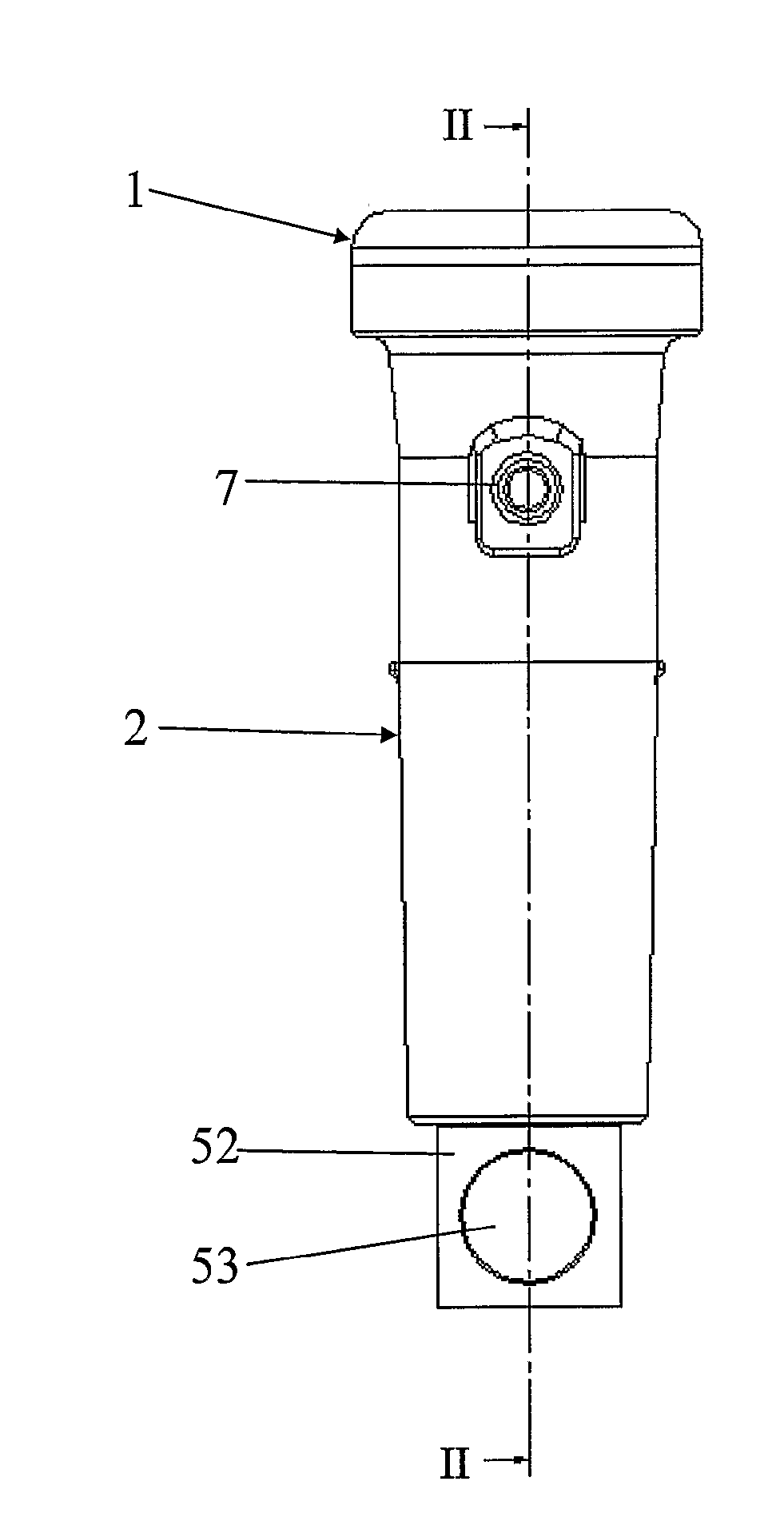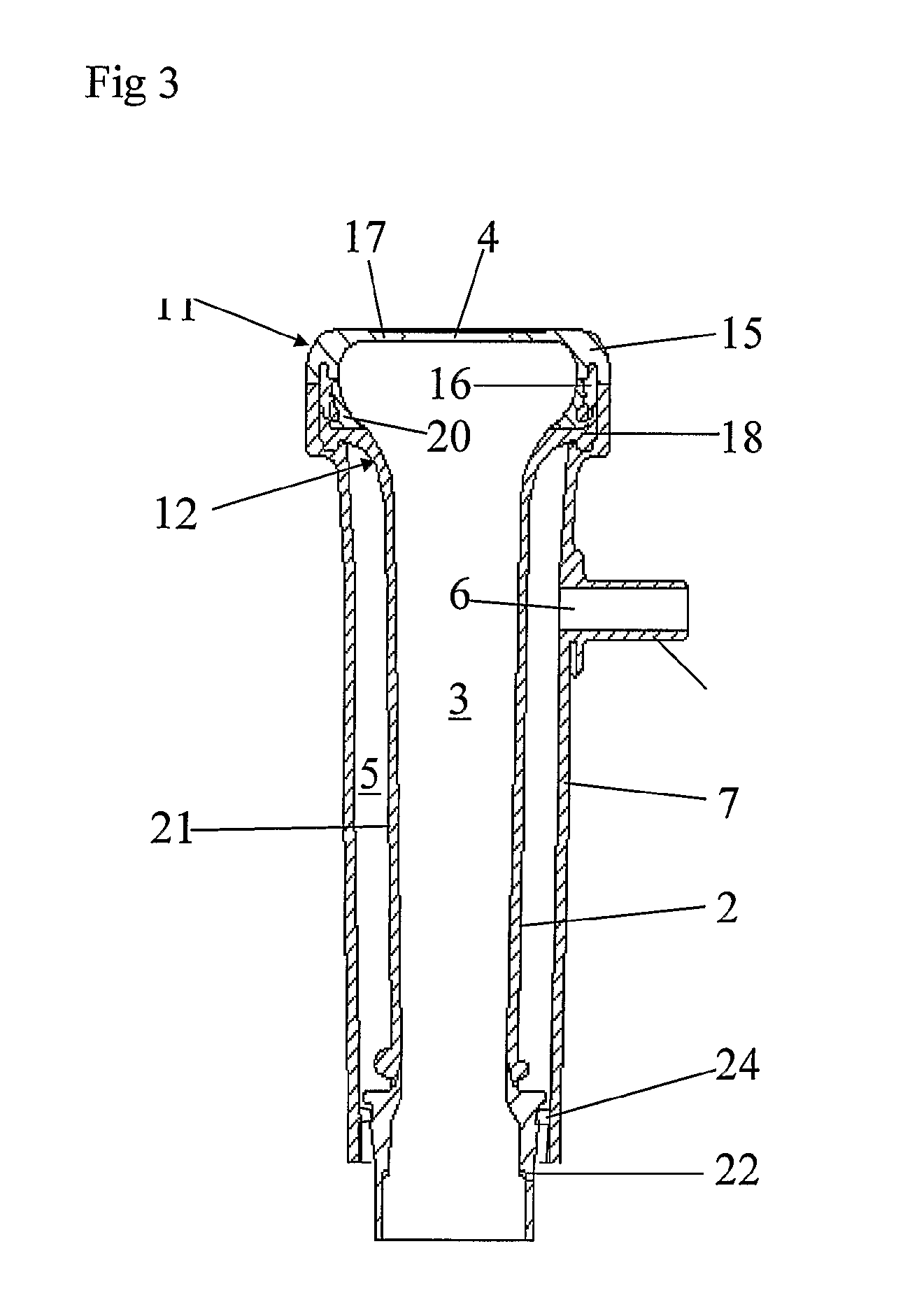Teatcup liner and a teatcup
a teatcup and liner technology, applied in the field of teatcup liner, can solve the problems of limiting the manufacturing process of teatcup liners, difficult to remove teatcup liners with a conventional design from the mould, and difficult vulcanisation of rubber vulcanisation, so as to achieve quick and reliable assembly of teatcup liner, and efficiently prevent penetration
- Summary
- Abstract
- Description
- Claims
- Application Information
AI Technical Summary
Benefits of technology
Problems solved by technology
Method used
Image
Examples
Embodiment Construction
[0027]FIGS. 1 and 2 disclose a teatcup during mounting thereof. The teatcup includes a teatcup liner 1 and a shell 2. In FIG. 3, the teatcup liner 1 is completely mounted in the shell 2. The teatcup includes an inner space 3 defined by the teatcup liner 1 and adapted to receive a teat of an animal to be milked. The teat is introduced into the inner space 3 via an opening 4. A pulsation chamber 5 is formed between the shell 2 and the teatcup liner 1, as appears from FIG. 3. The pulsation chamber 5 is accessible via an aperture 6, which in the embodiment disclosed is formed by a pulsation nipple 7. In use, the teatcup is, as disclosed in FIG. 3, intended to be mounted in a holding device (not disclosed), which connects the inner space 3 of the teatcup to a milk conduit (not disclosed) for the application of a low pressure or vacuum and for the transport of milk from the teat present in the inner space 3. The pulsation nipple 7 may be directly connected to a pulsation conduit (not disc...
PUM
 Login to View More
Login to View More Abstract
Description
Claims
Application Information
 Login to View More
Login to View More - R&D
- Intellectual Property
- Life Sciences
- Materials
- Tech Scout
- Unparalleled Data Quality
- Higher Quality Content
- 60% Fewer Hallucinations
Browse by: Latest US Patents, China's latest patents, Technical Efficacy Thesaurus, Application Domain, Technology Topic, Popular Technical Reports.
© 2025 PatSnap. All rights reserved.Legal|Privacy policy|Modern Slavery Act Transparency Statement|Sitemap|About US| Contact US: help@patsnap.com



